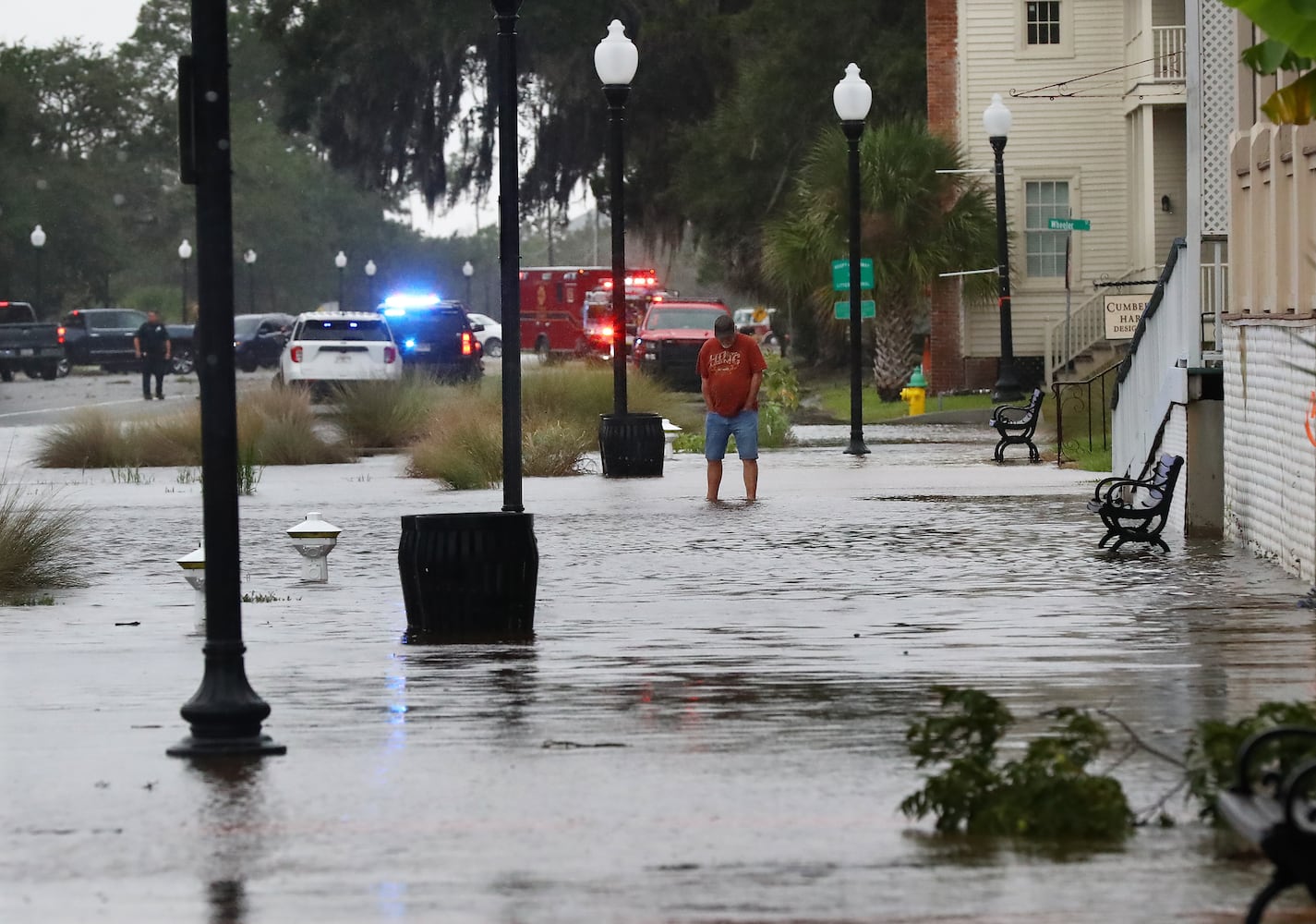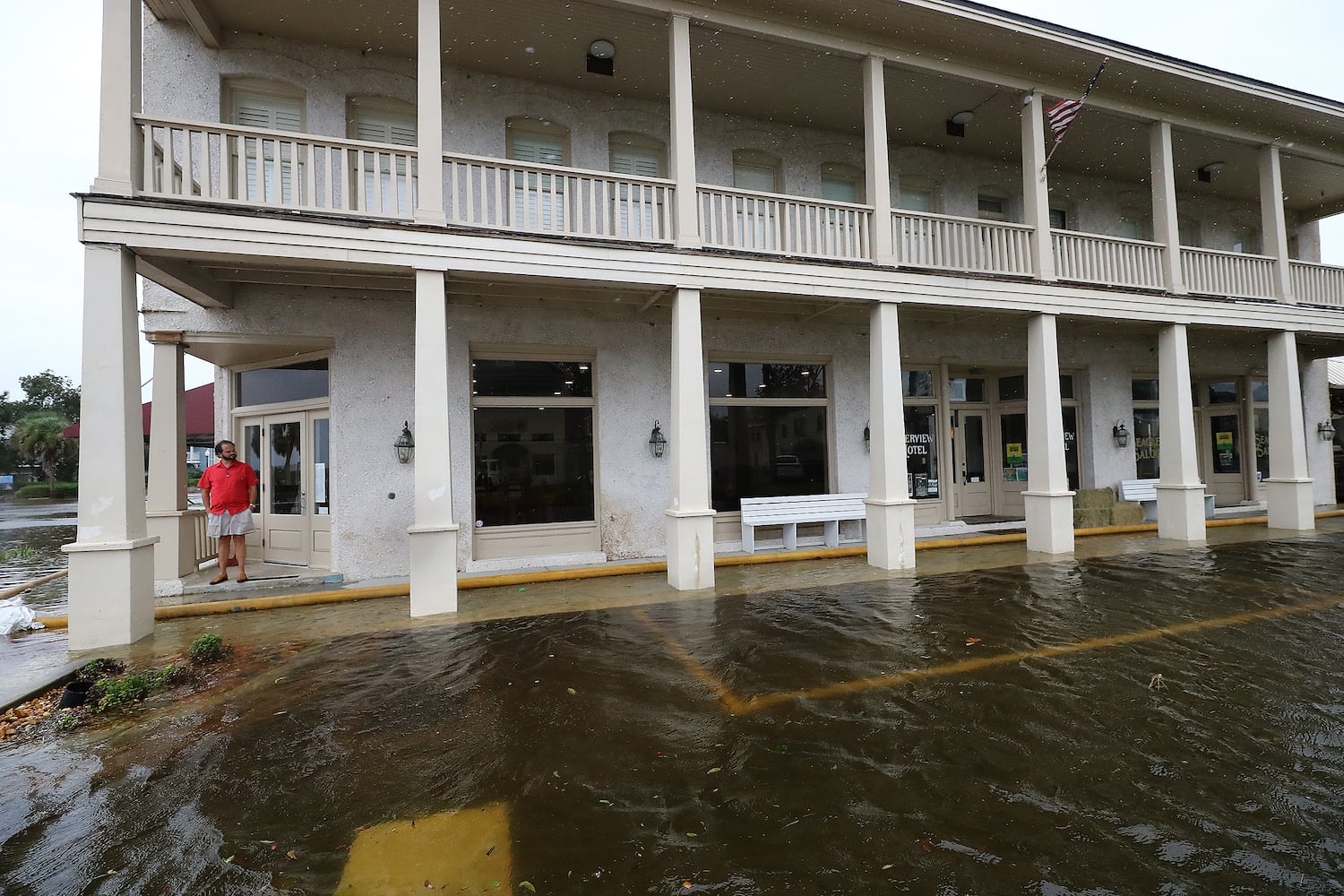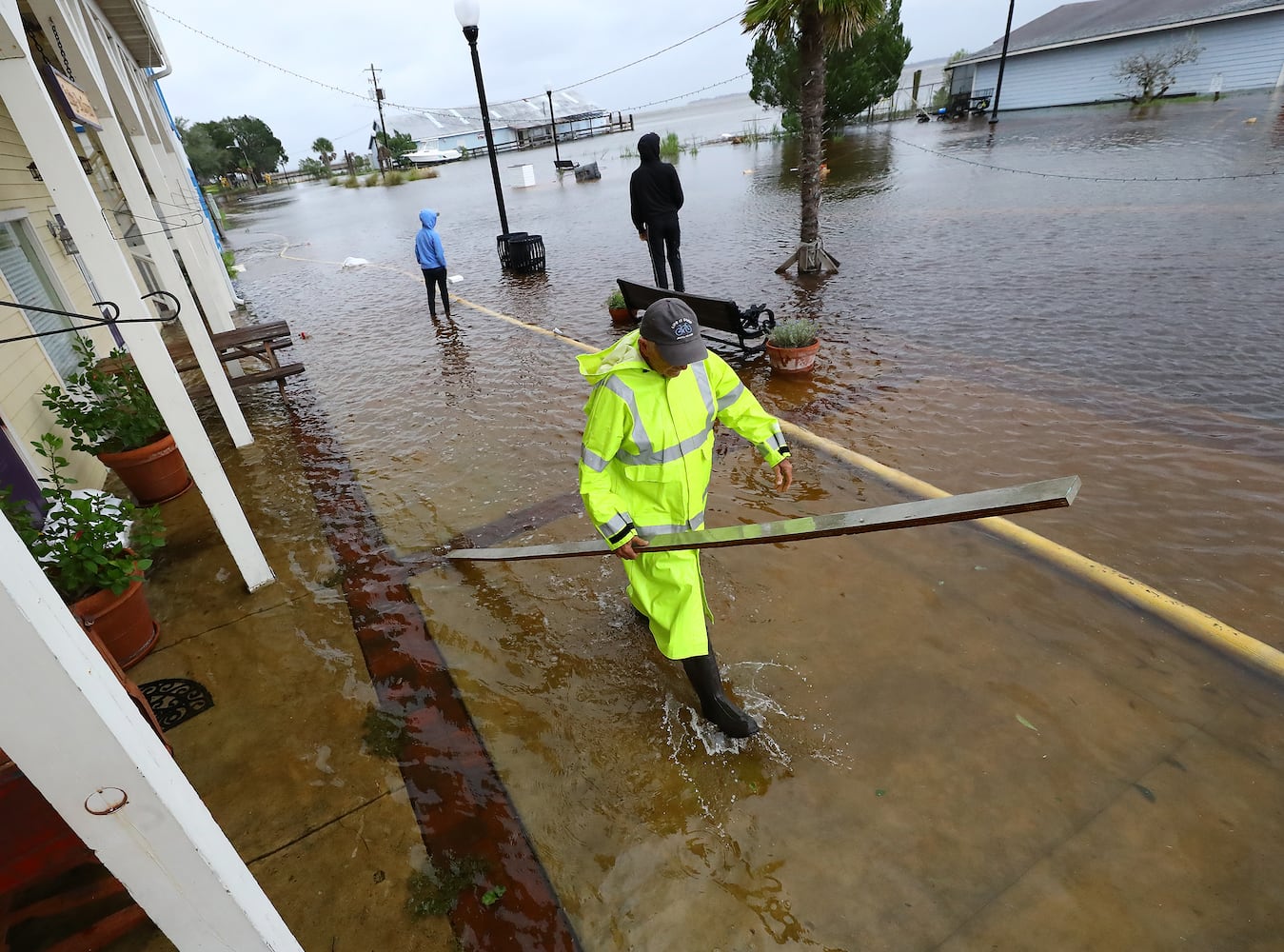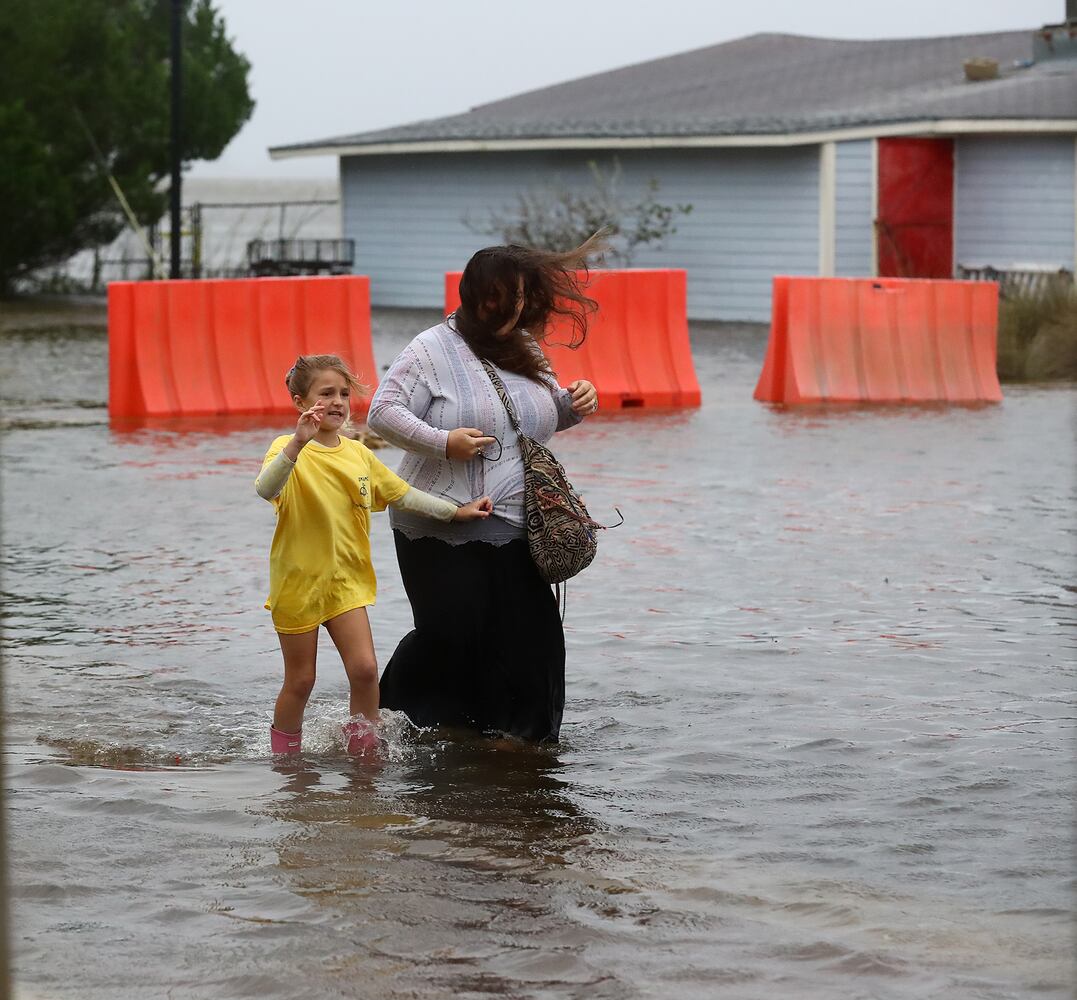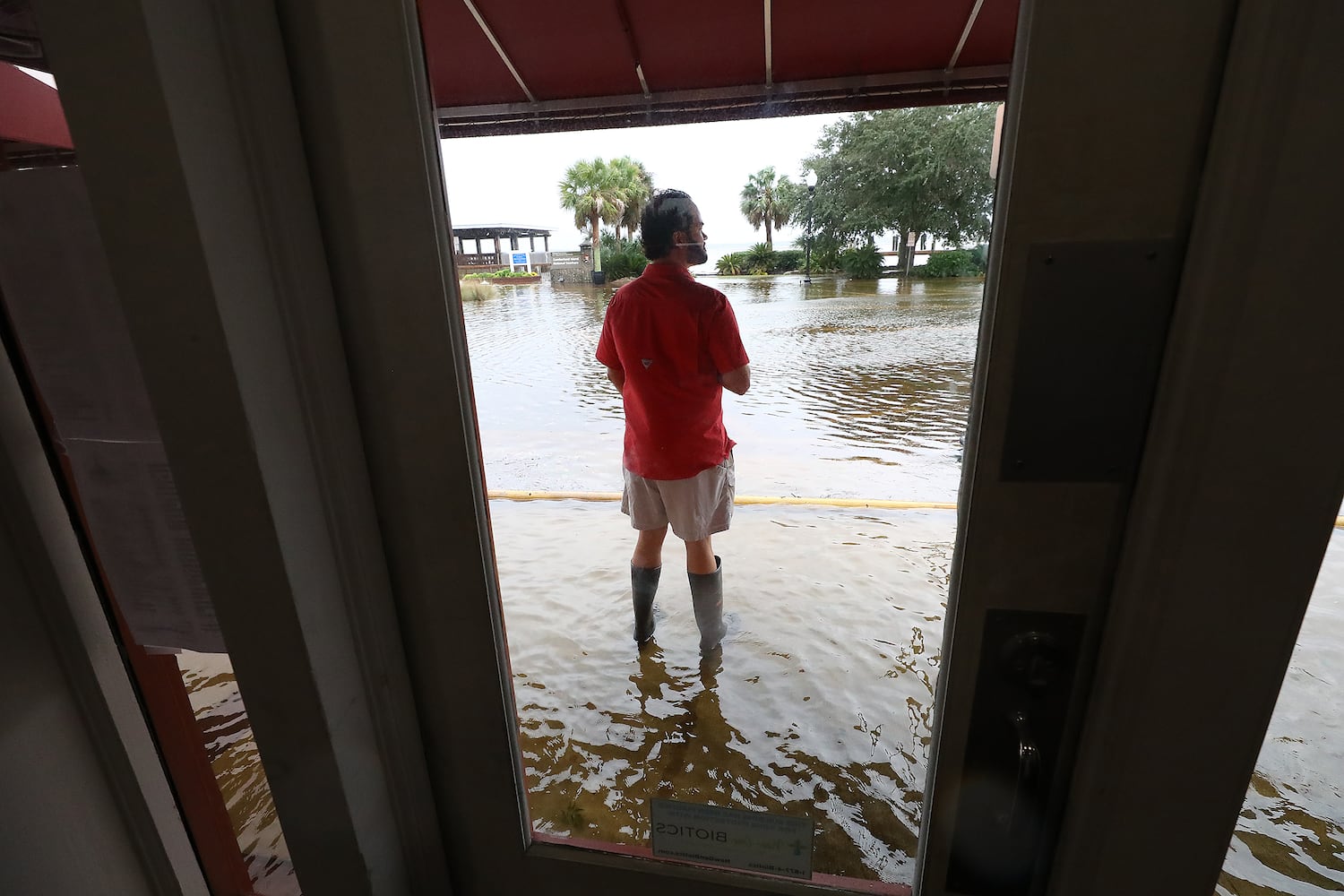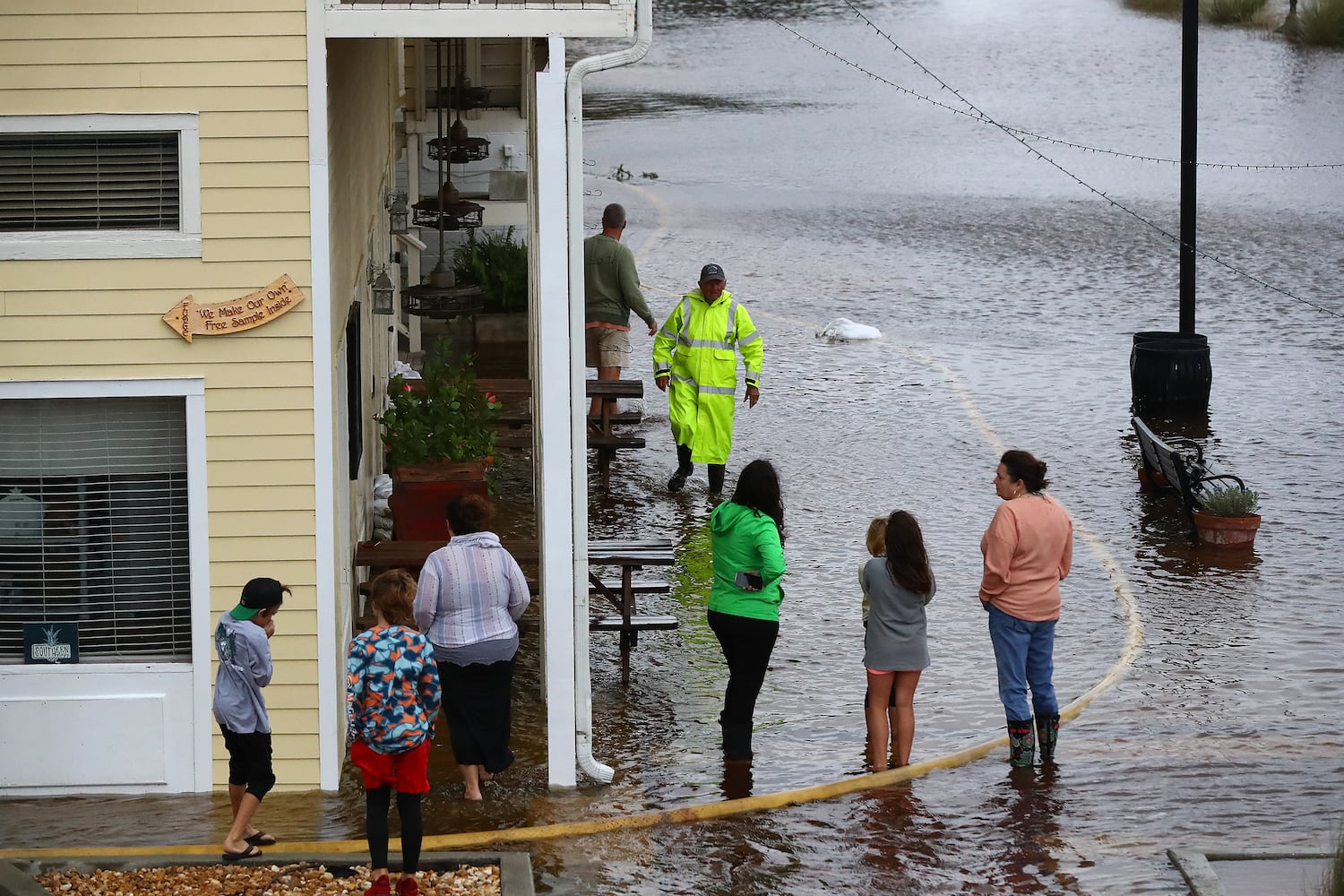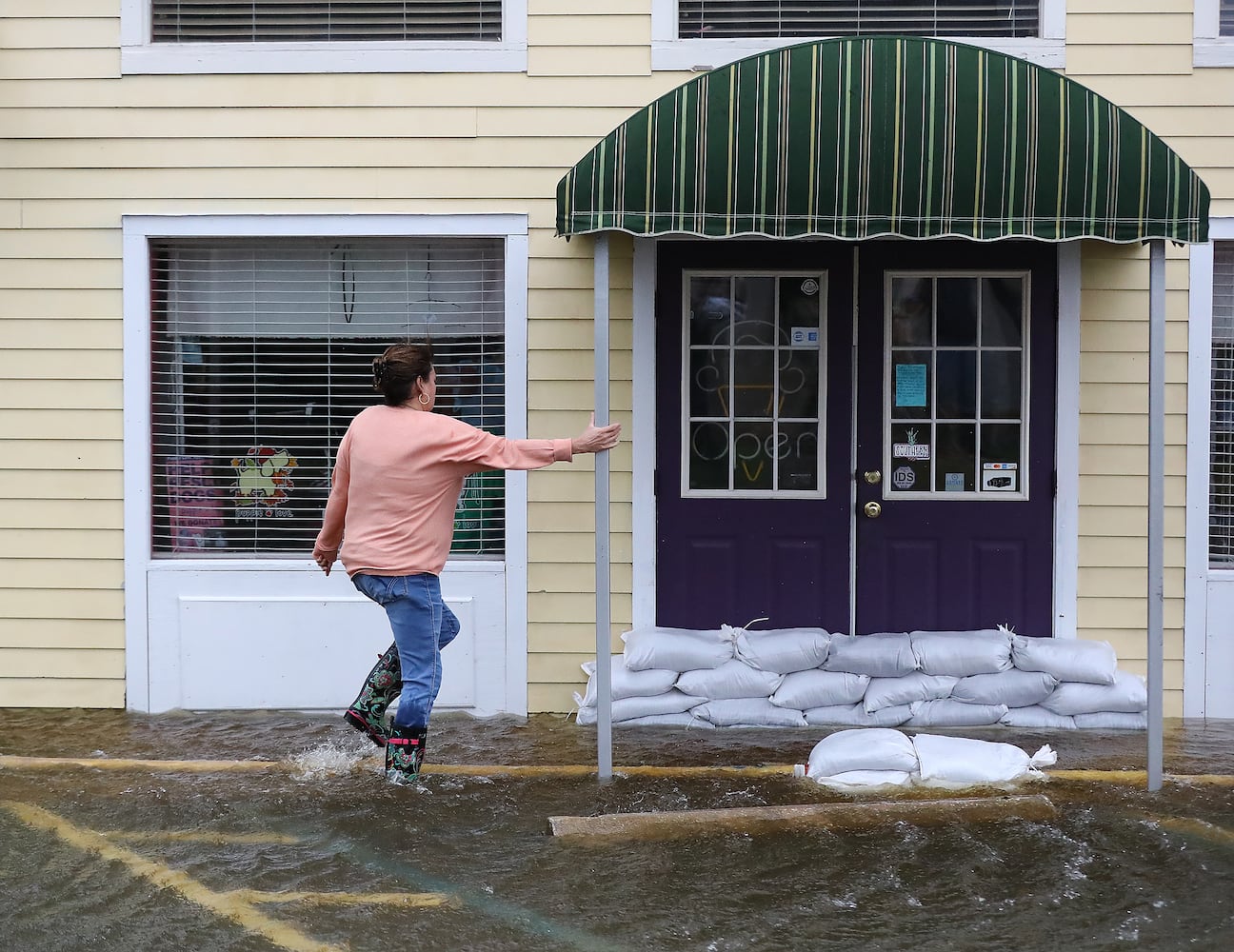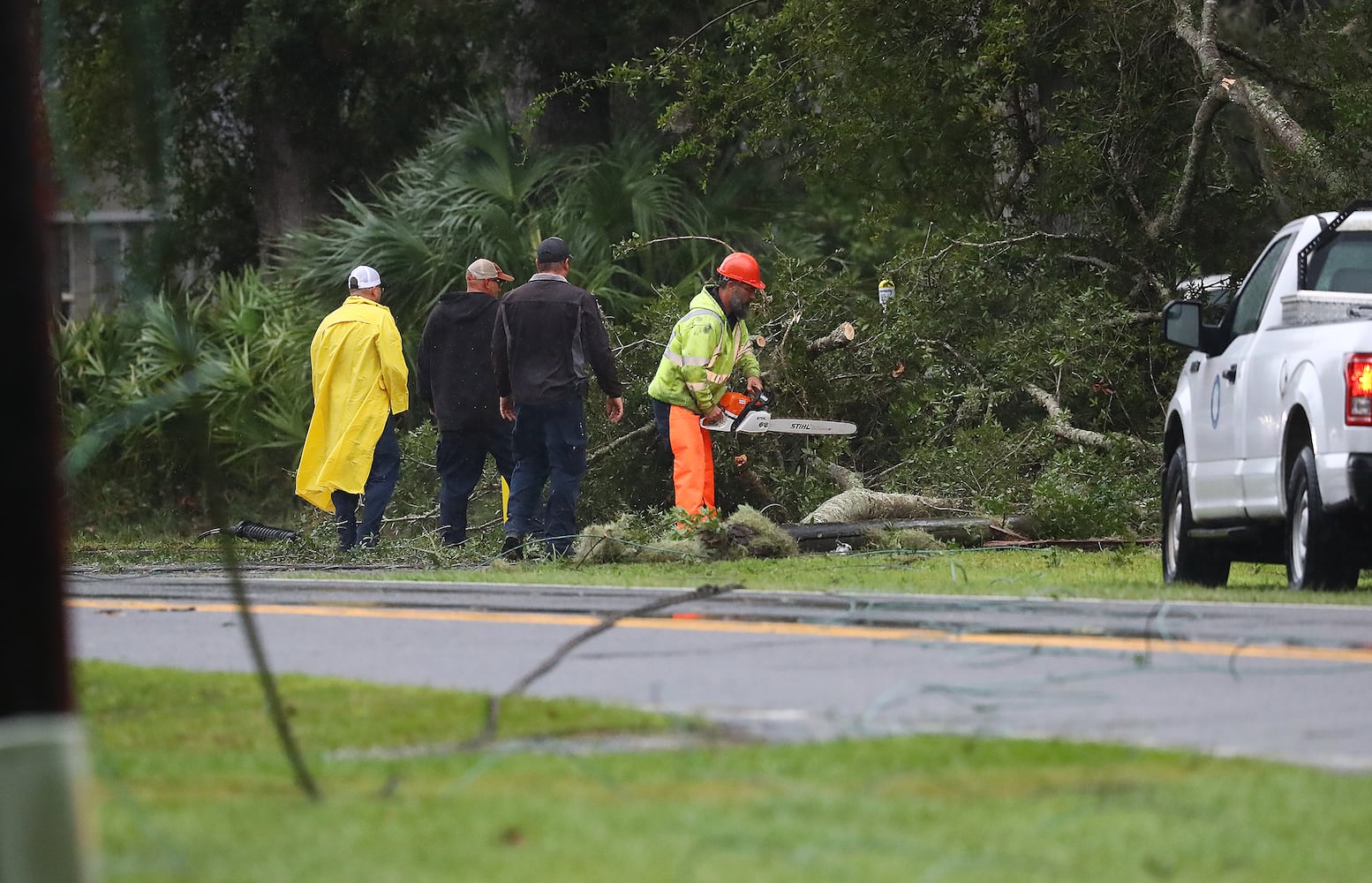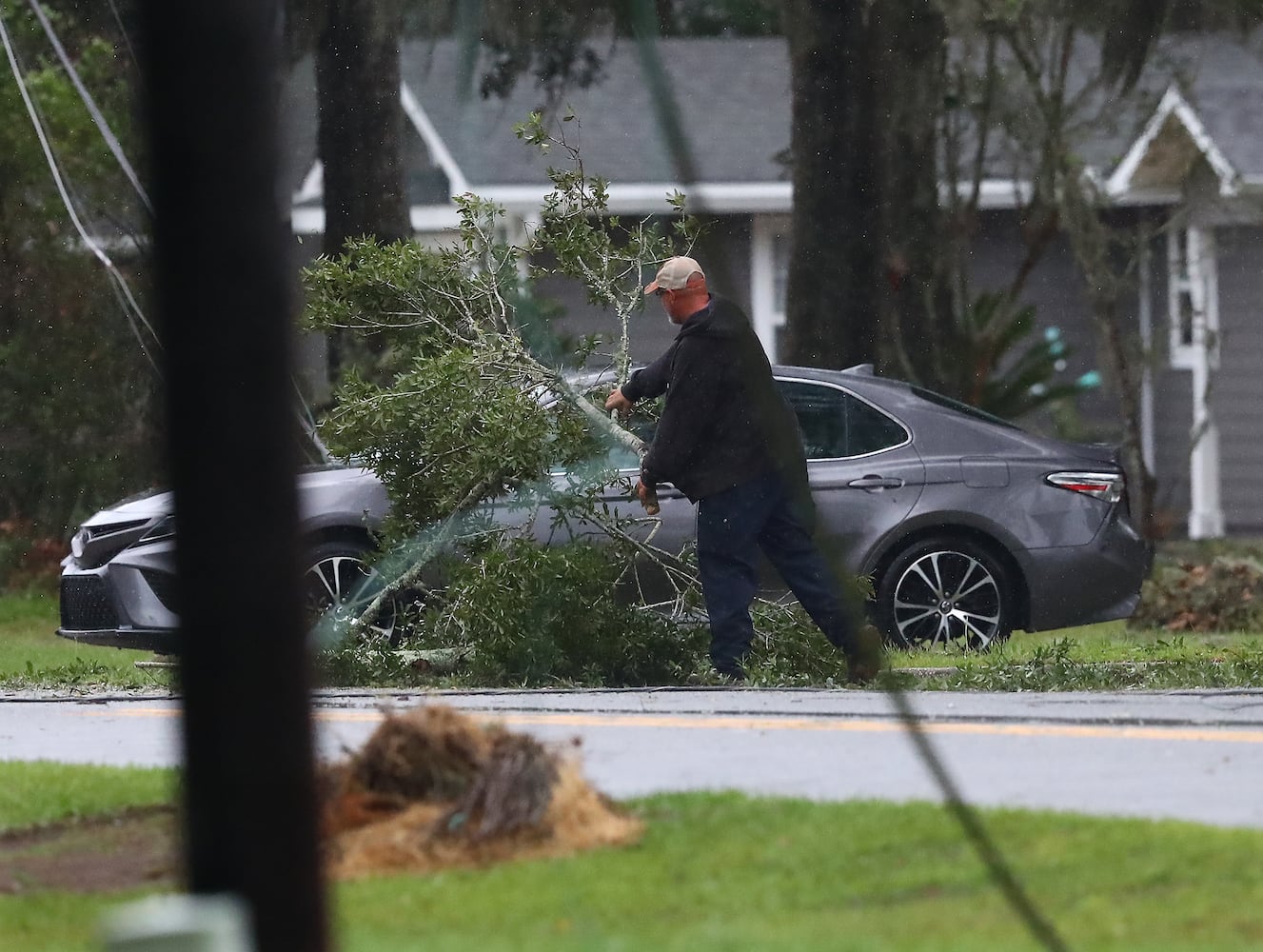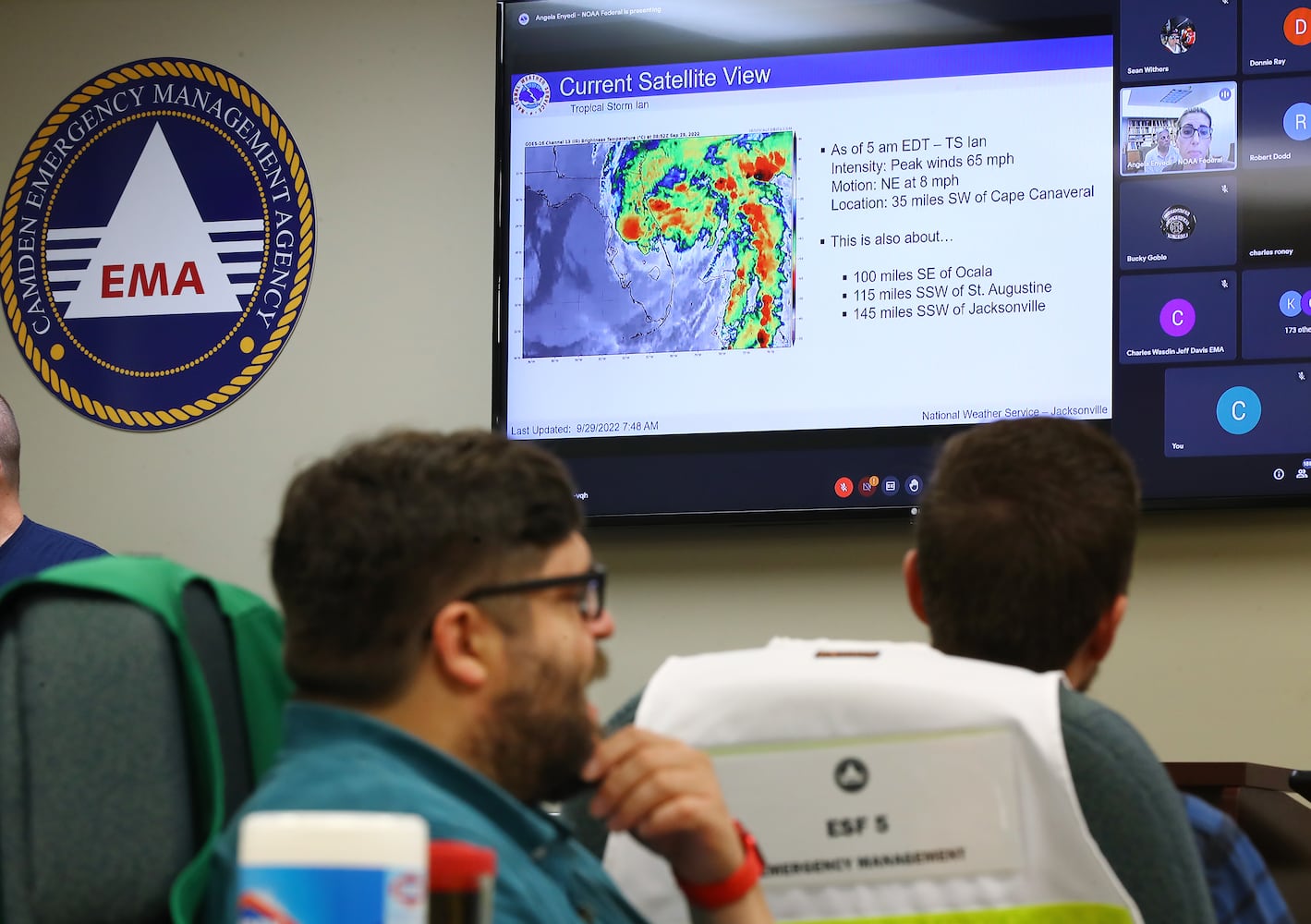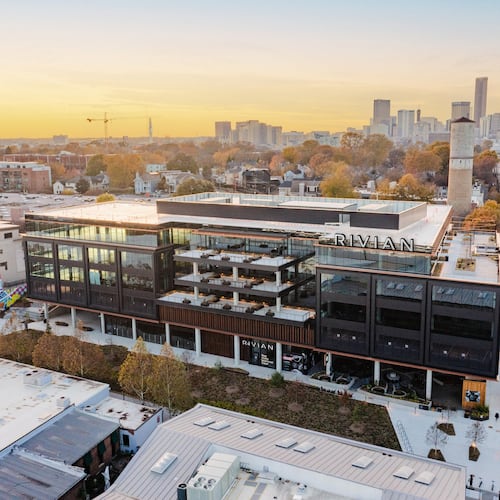The remnants of Hurricane Ian raged along the Georgia coast Thursday after leaving a wide trail of death and destruction across Florida.
Officials warned coastal residents to be ready for heavy rain, flooding and power outages as Ian — downgraded to tropical storm status but regaining strength over the Atlantic Ocean — headed toward another landfall in South Carolina, north of Savannah.
“I would urge Georgia citizens to be overprepared, and hopefully this storm underdelivers,” Gov. Brian Kemp said during a news conference in Savannah.
But Ian seemed poised to live up to its reputation as one of the strongest hurricanes ever to strike the United States.
Heavy rain moved into southeastern Georgia on Thursday, along with strong winds that drove water ashore in places like St. Mary’s, near the Florida border. The National Hurricane Center said ocean swells would intensify and were likely to cause “life-threatening surf and rip current conditions” in Georgia coastal communities.
Hurricane conditions were possible in Georgia overnight Thursday and into Friday, the center said. Forecasters said 2 to 5 inches of rain would fall across the region, with higher amounts in some locations. Flash floods are possible, and rivers could overflow.
Beaches and sand dunes could also suffer damage, the U.S. Geological Survey said. Storm surge is expected to wash over one-fourth of dunes in Georgia, the agency said, while three-fourths are likely to experience erosion.
Other parts of Georgia may be spared significant impacts, though, as the storm takes a more easterly path than forecasters had expected.
Rainfall of 1 to 4 inches is likely across the state this weekend, with lesser amounts in northern and western regions, including metro Atlanta. But the National Weather Service issued a high-wind advisory for much of the state, calling for steady winds of 15 to 25 mph and gusts of 25 to 35 mph, enough to potentially topple trees and power lines.
Kemp, who declared a statewide emergency that took effect Thursday, said he did not expect to order evacuations from flood-prone coastal areas. Residents, he said, had received plenty of warning as Ian approached, and some would refuse to leave even under an evacuation order.
“We’ve been very transparent with people about what we’re expecting,” Kemp said. “If people are worried about (flooding), they should move to higher ground or perhaps move inland and let the storm pass.”
By Thursday, leaving the area was becoming more difficult.
State transportation officials closed the Sidney Lanier Bridge on U.S. 17 in Glynn County early Thursday. The plan to close the Herman Talmadge Bridge in Savannah at 8 a.m. Friday was amended on Thursday; it will remain open.
Roads, particularly causeways to barrier islands, could flood because of storm surges. Water levels were expected to be especially high because of seasonal tides that had already filled tidal creeks and marshes.
At the same time, the storm could prevent emergency responders from helping residents who stay in their homes, said Chris Stallings, head of the Georgia Emergency Management Agency.
“It’s not going to be that traditional quick response,” Stallings said.
Likewise, utility crews won’t be able to restore power until the storm is over, Stallings said. Georgia Power and other utilities have staged crews throughout the state to reach regions affected by the storm as quickly as possible, he said.
By mid-afternoon Thursday, Georgia Power and Georgia EMC reported more than 6,000 outages from St. Mary’s to Savannah.
Across the region, the storm disrupted daily routines.
A blustery wind blew through downtown Savannah Thursday afternoon, but the gray skies had yet to deliver the heavy rainfall that is expected. Sidewalks were relatively barren, and some businesses closed early because of the coming storm. Still, patrons remained in bars on Liberty Street, and at a bakery, people sat at tables enjoying a late lunch.
The Georgia Ports Authority limited operations at the Savannah and Brunswick ports on Wednesday and Thursday and could close entirely on Friday.
In the Brunswick area, shrimp boats, secured to docks with double and triple lines, were out of commission until at least Saturday.
The Georgia Department of Natural Resources suspended the harvest of shellfish beginning Saturday until it determines whether the storm contaminated waters near shore. The temporary closure affects oysters, clams and other bivalve molluscan shellfish.
And evacuees from Florida streamed into Georgia, some taking rooms in hotels along major highways, others heading to the homes of relatives.
When Sue Levings, 62, heard Ian was on its way, she wasted no time in setting out for her daughter’s home in Royston in north Georgia. Before leaving home Monday night, she placed sandbags in front of her ground-level condominium in the Tampa Bay area and grabbed as many medications as were available in stores.
“My husband has a lot of medical conditions, and it’s a no-brainer – if something happens and they can’t get to us or we can’t get to the hospital, that’s just not an option,” Levings said Thursday. “So we said, ‘We’re going.’”
She was grateful to be out of the storm’s path.
“It’s weird when you’re packing and you’re thinking what’s important: safety and family,” she said. “Everything else is just stuff. It can be replaced.”
Staff writers Asia Simone Burns contributed reporting from Savannah and Kelly Yamanouchi, Anjali Huynh and Drew Kann in Atlanta.
More details
- The National Hurricane Center said ocean swells would intensify and were likely to cause “life-threatening surf and rip current conditions” in Georgia coastal communities.
- Rainfall of 1 to 4 inches is likely across the state this weekend, with lesser amounts in northern and western regions, including metro Atlanta. But the National Weather Service issued a high-wind advisory for much of the state, calling for steady winds of 15 to 25 mph and gusts of 25 to 35 mph, enough to potentially topple trees and power lines.
- Hurricane conditions were possible in Georgia overnight Thursday and into Friday, the center said. Forecasters said 2 to 5 inches of rain would fall across the region, with higher amounts in some locations. Flash floods are possible, and rivers could overflow.
About the Author
Keep Reading
The Latest
Featured
